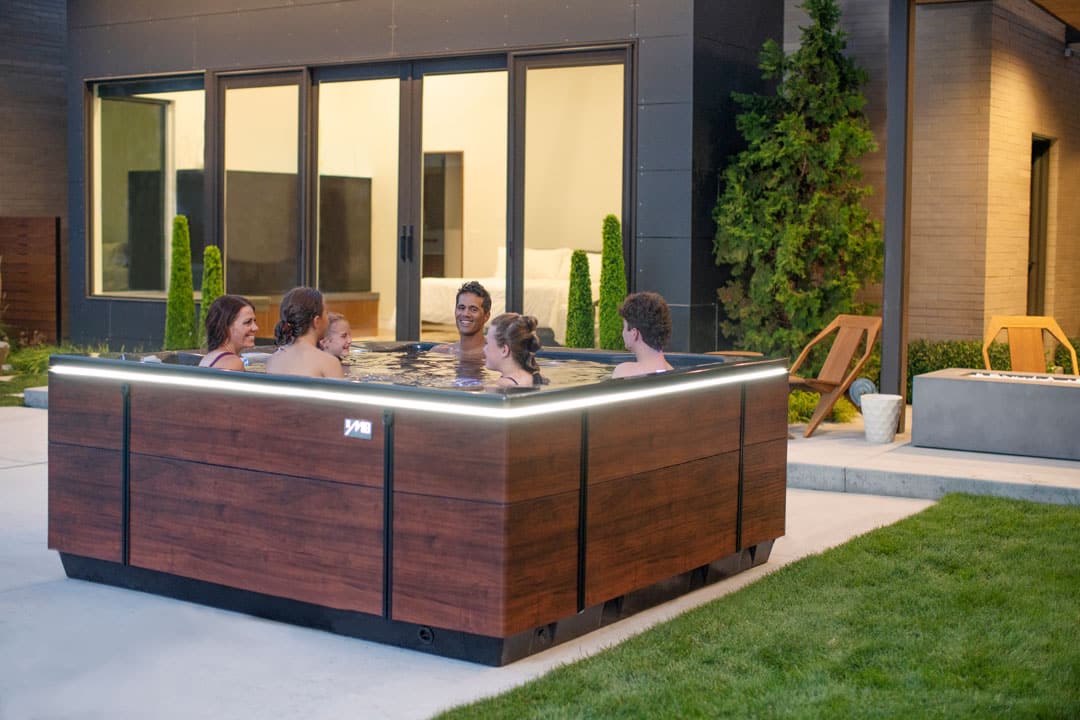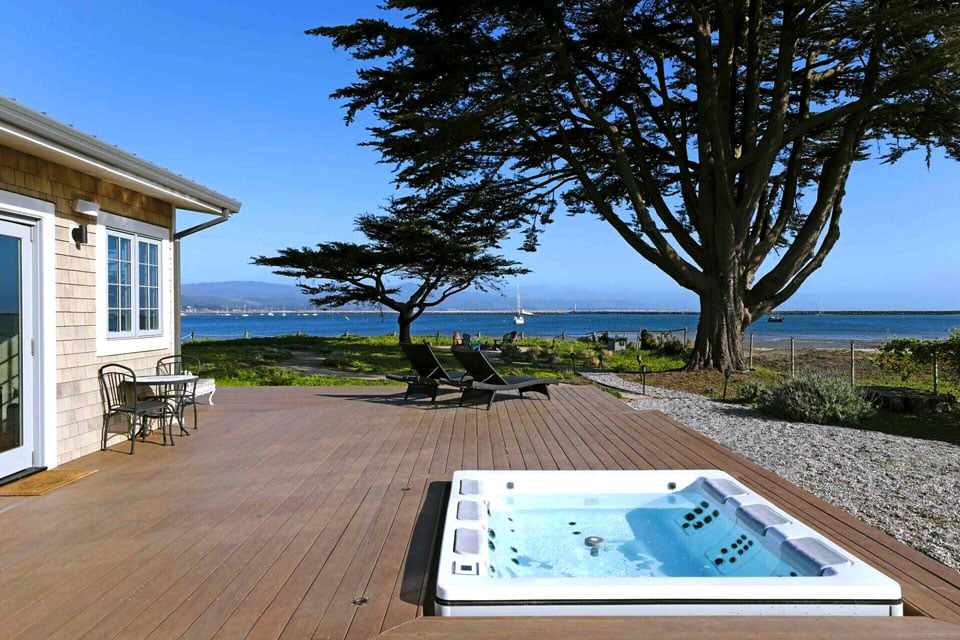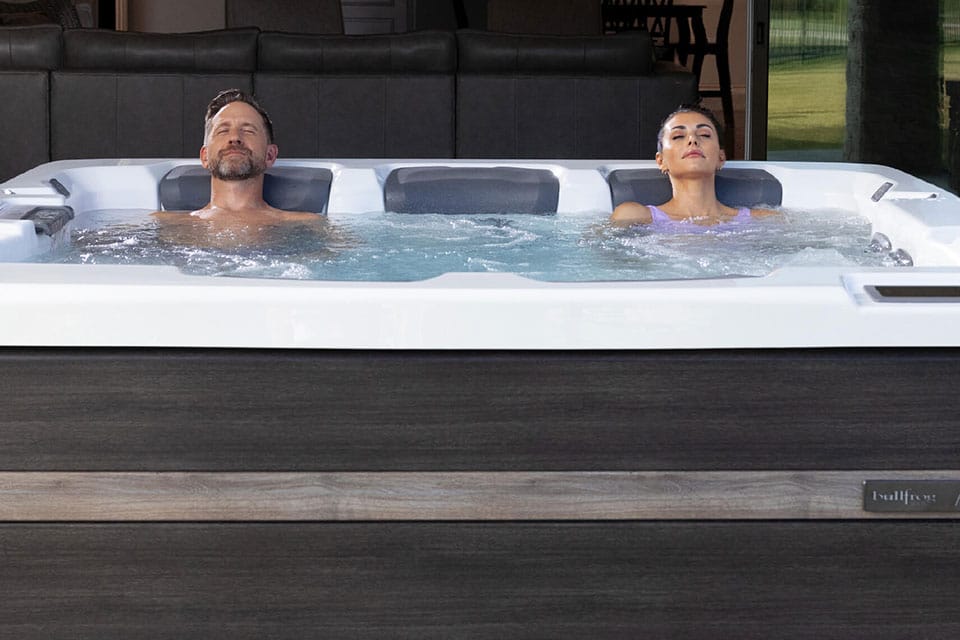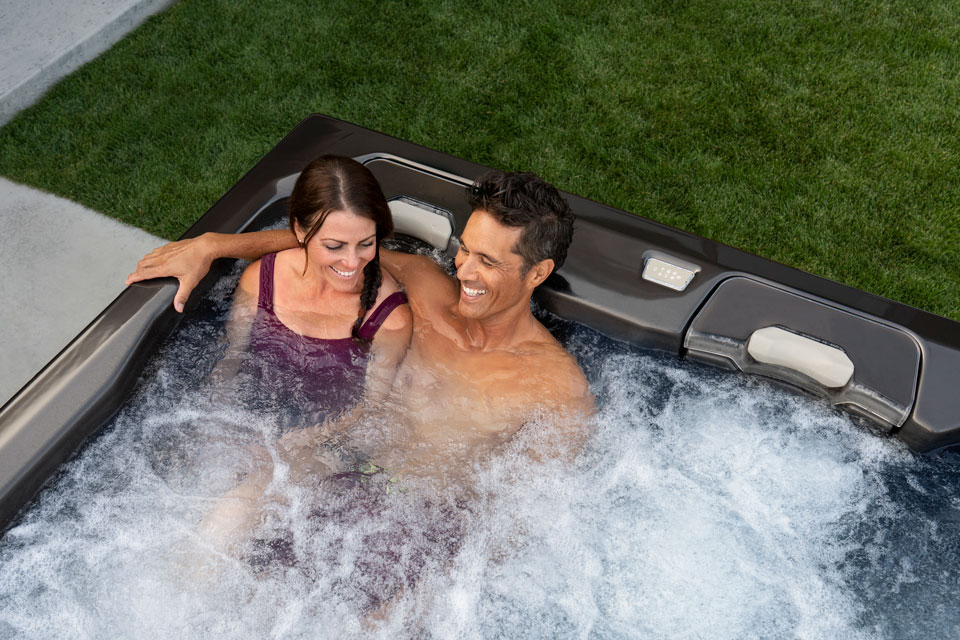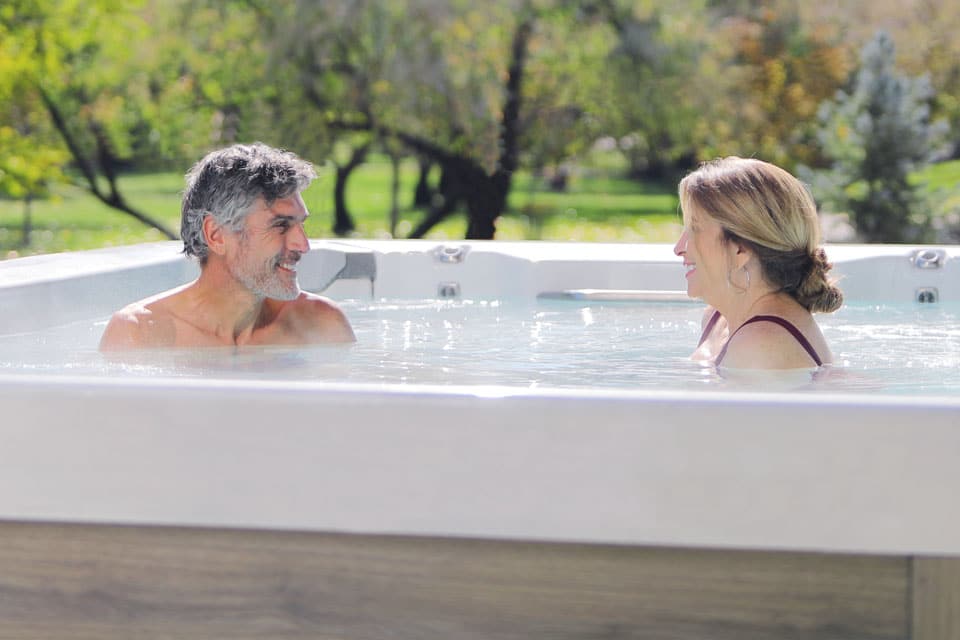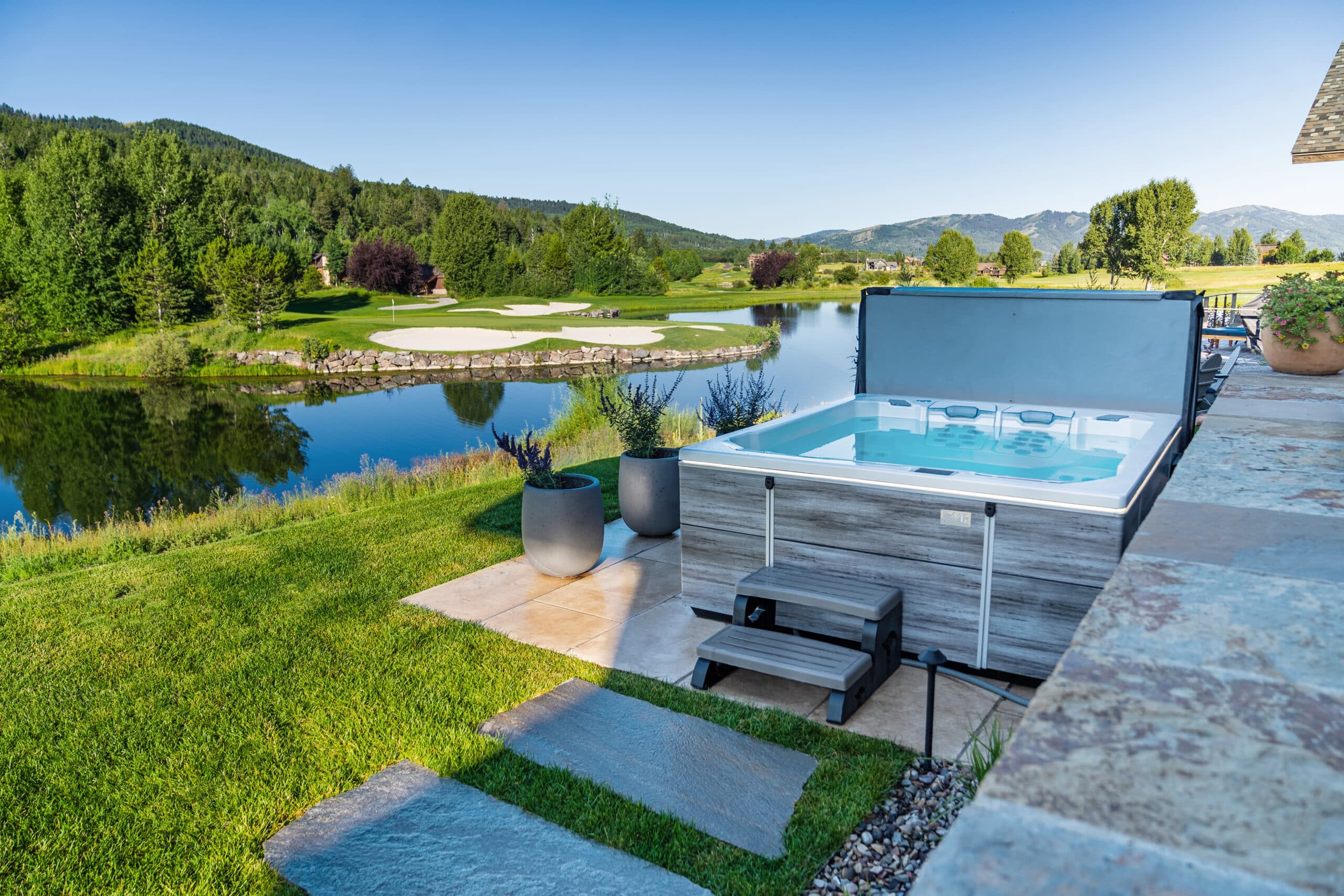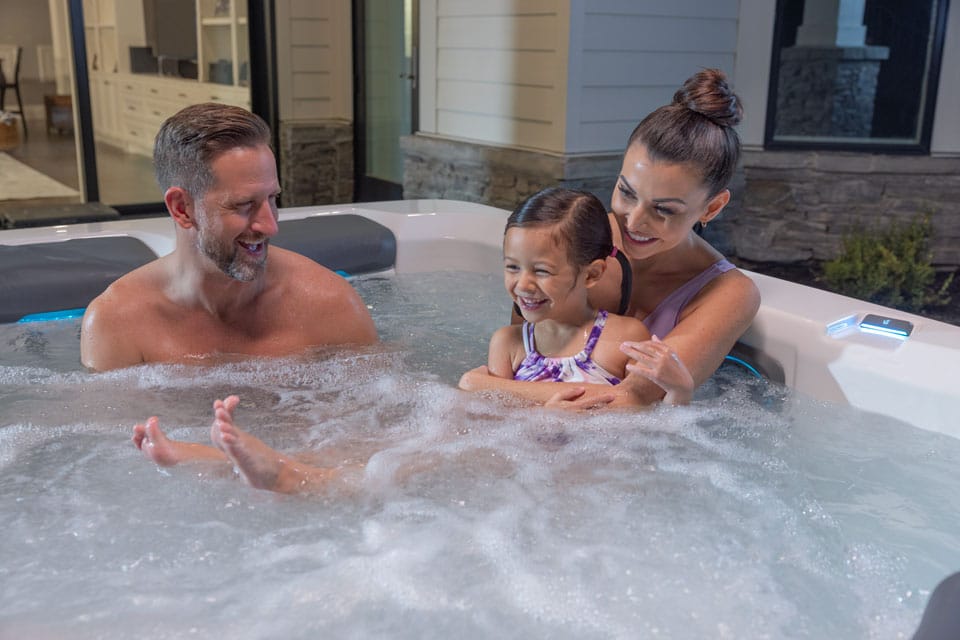Does Your Hot Tub Need to Be on Concrete?
The recommended foundation material for a hot tub foundation includes a concrete hot tub pad, concrete paver/patio, pea gravel, crushed rock, or a reinforced deck. Authorized Bullfrog Spas dealers can also sell or recommend pre-formed hot tub pads.
A concrete foundation provides stability and durability for your hot tub’s base. It can withstand the weight of a hot tub and resist shifting over time. A hot tub on concrete patio also provides a level surface, which is crucial for the proper functioning of a hot tub. The flat and even foundation prevents potential issues with the hot tub’s structure and operations.
How Thick of Concrete Do I Need for My Hot Tub?
Alternatives to Concrete
While installing a hot tub on concrete slab is a popular choice, it’s not the only option. The key is providing a stable and level base for your hot tub to ensure proper functionality and longevity.
Decks
Wooden or composite decks provide an aesthetically pleasing alternative. Ensure the deck is sturdy enough to support the weight of the hot tub and that it’s properly leveled. Wooden decks can be suitable, but they require careful planning and reinforcement. Use proper joist spacing and consider adding extra supports to accommodate the weight of the hot tub and the water.
If you’re integrating the hot tub into an existing deck, ensure that the deck structure can support the added weight. Consult with a structural engineer to confirm the deck’s capacity and reinforce it if necessary.
Pea Gravel or Crushed Stone
This option offers good drainage and is relatively easy to install. However, ensuring a completely level surface can be a challenge.
Concrete Pavers or Patio Blocks
Grass
Additional Considerations
Consider how the hot tub will be delivered and installed. Think about how you will access the hot tub for maintenance or repairs. Ensure there’s sufficient access for equipment and any necessary modifications to the chosen foundation. It should allow for easy access to the equipment panel and other essential components.
Indoors or The Great Outdoors
When choosing a prime location, ask yourself who will be enjoying your new hot tub and if its purpose is to serve as a gathering place for entertaining family and friends or will it be used only privately by the adults in the household for therapy and relaxation. If planning to place your spa indoors, it must be in a location with excellent ventilation to prevent the build-up of steam and moisture in addition to having drainage access. If you’re planning to install your hot tub outdoors, you’ll want to incorporate the surrounding landscape to your best advantage by having a pleasant or scenic vista as the backdrop for the spa.
Access
If you’re installing your new spa outdoors, having convenient access to the main home as well as a place for wardrobe changes is essential. It’s important to choose a location where the spa blends into the environment in a natural way rather than looking like some eyesore that was just plunked down on a pad without any planning beforehand. Does the location you select as the prime spot for your spa afford users enough privacy and have you made plans to screen your hot tub activities from the prying eyes of onlookers or even the next door neighbors?
Consider also how the hot tub will be delivered and installed. Think about how you will access the hot tub for maintenance or repairs. Ensure there’s sufficient access for equipment and any necessary modifications to the chosen foundation. It should allow for easy access to the equipment panel and other essential components.
Level Ground
Local Codes & Regulations
Always check and adhere to local building codes and regulations. Some areas may have specific requirements for hot tub installations, including foundation specifications. Failure to comply can lead to issues down the line.
Drainage
Next Steps
Design Your Own
Use our online Design Studio tool to select your model, JetPaks, and accessories. Once you’re done, you’ll receive an instant price quote.
